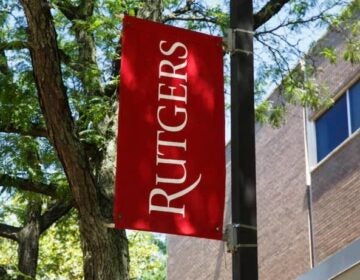New study on charter school success in Newark may bring hope for Camden
This is part of a series from education blogger Laura Waters of NJ Left Behind.
Last week Stanford University’s Center for Research on Education Outcomes (CREDO) released a report called “Charter School Outcomes in New Jersey.” The analysis has received national attention, and no shortage of spin. Charter school advocates crow at results that show increased student achievement, especially in Newark. Charter school opponents snark at poor outcomes for kids in charter schools in Camden and Trenton.
The charter school wars in New Jersey seem to generate an environment that does not allow nuances and provokes stridency on both sides of the aisle. Every statistic becomes a rhetorical weapon – either charters are a panacea for all our educational ills or charters are a privatization scheme contrived by greedy hedge fund managers. None of this gaming is useful for kids or teachers.
Is it possible to leave political jockeying at the door and look at the CREDO report through an exclusively educational lens? Let’s give it a try.
The report
The CREDO report examines charter school students’ performance on state standardized tests for the years 2006 through 2011. The data analysis controls for student characteristics, starting scores, race/ethnicity, special education, poverty, and English proficiency. Student achievement in charters is compared with achievement in both traditional public schools within the same city and traditional public schools statewide.
Most of New Jersey’s charters are clustered in Newark, Trenton, Paterson, Jersey City, and Camden and, thus, notes the report, charters here “have more students in poverty, more black and Hispanic students and fewer whites and Asians” when compared to statewide averages. In addition, charters enroll more black students and fewer Hispanic students compared to local traditional public schools. The proportion of students living in poverty is the same in charters and traditional public schools in the same city.
In general, say the analysts, New Jersey is doing a great job: “The charter school results presented in this report place New Jersey among the highest performing states studied to date.” On average, students gain an additional two months of learning in reading over kids in traditional public schools. They gain about three months of additional learning in math.
Newark stands out
But that’s an average. The real news is Newark. According to the report, “Charter students in Newark gain an additional seven and a half months in reading and nine months in math.” Newark’s stunning results bring up the averages for all the state charter schools. In fact, continues the report, “When we investigate the learning impacts of Newark charter schools separately, we find that their results are larger in reading and math than the overall state results.
Grouping the other four major cities in New Jersey (Camden, Trenton, Jersey City, and Paterson) shows that charter students in these areas learn significantly less than their TPS [traditional public school] peers in reading. There are no differences in learning gains between charter students in the four other major cities and their virtual counterparts in math.”
Lessons from Newark?
So, what’s different about Newark? What can we all learn – charter school advocates and opponents alike – about how to foster high academic achievement among poor children? (One oft-stated difference – lower charter enrollment of special education students and English language learners – is dealt with in the report.)
One possibility is that Newark is home to five KIPP schools, the highly-regarded national network of charters.. There are no other KIPP schools in the state. What is KIPP doing that other charters – indeed, other traditional public schools – aren’t doing?
Another high-achieving charter in Newark is North Star Academy, part of the Uncommon Schools network, which has schools in New York City, Boston, Rochester, and Troy. Is there something special about large charter management organizations?
Newark also has a reform-minded superintendent, Cami Anderson, who doesn’t seem to view charter schools as a threat to her market share. Is the relationship between a district’s leadership and charters a factor in student success?
Shouldn’t we be less invested in superficial labels – charter or traditional – and more invested in student outcomes?
There’s one other newsworthy item this week. After an initial rejection, the Camden Board of Education approved several charter schools in the district to be run by KIPP under the auspices of N.J.’s Urban Hope Act. If KIPP can replicate its Newark success with Camden’s children, then we may have some answers to our questions.
Laura Waters is president of the Lawrence Township School Board in Mercer County. She also writes about New Jersey’s public education on her blog NJ Left Behind. Follow her on Twitter @NJLeftbehind.
WHYY is your source for fact-based, in-depth journalism and information. As a nonprofit organization, we rely on financial support from readers like you. Please give today.




